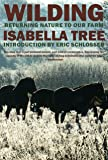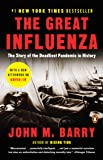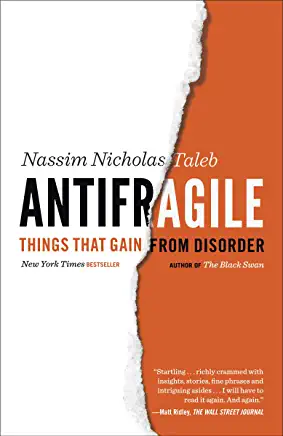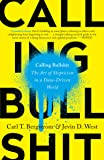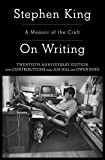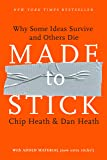Some of books I loved (and finished) this year.
With a short review.
That’s it.
The Ministry for the Future by Kim Stanley Robinson
A heatwave kills 20 million in India and the climate crisis gets real. We need to start thinking way bigger if we’re going to tackle global warming and this book nails making the intangible future feel real. It’s not dystopian and is laced with optimism about our species ability to change.
Wilding: Returning Nature to Our Farm by Isabella Tree and Eric Schlosser
Large landholders in Sussex give up on industrial farming and try to return their land to the wild. It makes you realise how much nature has been lost in the post war period – not just mass destructions of habitats and species, but knowledge about them. Many of our “traditional” ideas around what “wild” and “natural” are have been totally wrong as they’ve used post industrial habitats as their reference point. The bucolic English landscape would have been a lot wilder and more full of bugs, birds and bees. It can happen again.
The Journalist and the Murderer by Janet Malcolm
The best true crime book since In Cold Blood – a hidden gem from the 90s. It’s the story of a journalist who gets himself embedded in the defence team of a murder suspect and then gets sued by the murder suspect for defamation after he publishes his true crime book. A very American tale that’s as much a soliloquy on what it means to be a journalist as it is a gripping did-he-do-it murder mystery. If you liked the documentary or HBO adaptation of The Staircase, you’ll love this.
How to Change Your Mind by Michael Pollan
Although I am by no means a psychedelic aficionado, I’ve followed the increasingly rigorous research into the LSD and other hallucinogens with glee. Michael Pollan in his typically lucid prose gives a graduate education into the increasingly obvious benefits that can come from a controlled journey deeper into your mind. Much better than the Netflix show.
The Great Influenza: The Story of the Deadliest Pandemic in History by John Barry
One that I wish I had read right at the beginning of the current pandemic although the death tolls of the Spanish Flu might have made it even harder to sleep. It caused at least fifty million deaths worldwide, and possibly as many as one hundred million. Yet even that number understates the horror of the disease, a horror contained in other data. Normally influenza chiefly kills the elderly and infants, but in the 1918 pandemic roughly half of those who died were young men and women in the prime of their life, in their twenties and thirties.
It’s chock full of interesting facts about that period. Not least the origins of the name “Spanish Flu”. Spain actually had very few cases at the beginning of the pandemic and the virus almost certainly didn’t originate in Spain. But Spain was neutral during the war. That meant the government did not censor the press, and unlike French, German, and British newspapers—which printed nothing negative, nothing that might hurt morale—Spanish papers were filled with reports of the disease, especially when King Alphonse XIII fell seriously ill. The disease soon became known as “Spanish influenza” or “Spanish flu,” very likely because only Spanish newspapers were publishing accounts of the spread of the disease that were picked up in other countries.
Thinking in Bets: Making Smarter Decisions When You Don’t Have All the Facts by Annie Duke
Poker is a great game for honing your decision making process. For most people, it’s difficult to say “I’m not sure” in a world that values and, even, rewards the appearance of certainty. But professional poker players are comfortable with the fact that great decisions don’t always lead to great outcomes and bad decisions don’t always lead to bad outcomes. The best players resist “resulting”.
Antifragile: Things That Gain from Disorder by Nassim Taleb
“Some things benefit from shocks; they thrive and grow when exposed to volatility, randomness, disorder, and stressors and love adventure, risk, and uncertainty. Yet, in spite of the ubiquity of the phenomenon, there is no word for the exact opposite of fragile. Let us call it antifragile. Antifragility is beyond resilience or robustness. The resilient resists shocks and stays the same; the antifragile gets better. This property is behind everything that has changed with time: evolution, culture, ideas, revolutions, political systems, technological innovation, cultural and economic success, corporate survival, good recipes (say, chicken soup or steak tartare with a drop of cognac), the rise of cities, cultures, legal systems, equatorial forests, bacterial resistance … even our own existence as a species on this planet.”
Such an important concept for anybody trying to build something that will last.
This is a great piece on how to apply the concept to life in general.
Calling Bullshit: The Art of Skepticism in a Data-Driven World by Carl T. Bergstrom and Jevin D. West
Bullshit is “unclarifiable unclarity.” Not only is the bullshitter’s prose unclear, but the ideas underlying it are so ill-formed that it cannot possibly be clarified.
If this book was mandatory in high school the US the world would be a better place. Unclarifiable I know. Reminds me of Neil Postman’s dictum, “At any given time, the chief source of bullshit with which you have to contend is yourself.”
On Writing by Stephen King
No one likes grammar. Or writing. Even writers it seems. They all complain about it.
Good writing is often about letting go of fear and affectation. And adverbs.
Every copywriter should read this book. Dammit everybody who does any writing in their work should read it.
Made to Stick by Chip & Dan Heath
To summarize, here’s the Heath’s checklist for creating a successful idea: you’ll need a Simple, Unexpected, Concrete Credentialed, Emotional Story. Luckily it also spells out SUCCES. Funny that.


